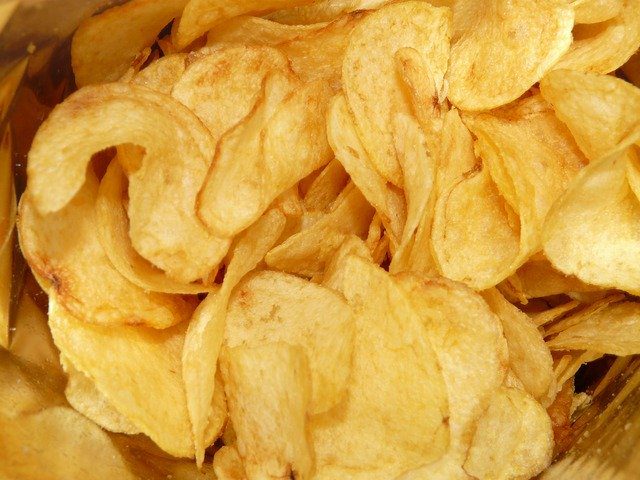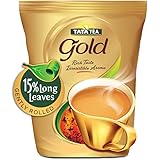Disodium guanylate or Flavor enhancer 627 or GMP is a popular food additive. Earlier it was made using sardines (fish), but now it’s prepared from a yeast extract. Bonito fish was the source of disodium inosinate and disodium guanylate, i.e., 631 and 627, but now a vegan version is used which is prepared with yeast.
Excessive use of this food additive can cause severe side effects. It is an odorless, white crystalline powder. It is an approved food additive in Australia and New Zealand under code no 627.
Table of Contents
What Does Enhancer 627 Mean?
Tata Tea Gold 1kg, Premium Assam Teas With Gently Rolled Aromatic Long Loose Leaves, Rich & Aromatic Chai, Black Tea
₹473.00 (as of March 18, 2025 09:50 GMT +05:30 - More infoProduct prices and availability are accurate as of the date/time indicated and are subject to change. Any price and availability information displayed on [relevant Amazon Site(s), as applicable] at the time of purchase will apply to the purchase of this product.)Enhancer 627 is a food additive used to enhance the taste of any food product. It acts as a flavor enhancer when added in minimal proportions to any food item. It has no color of its own. You can find it in a small crystal form or crystalline-powder form. It is obtained from the monosodium glutamate.
Tapioca starch is fermented to prepare this flavor enhancer 627. Sardines and yeast are other ingredients that are used to extract this flavor enhancer. It adds a savory flavor to various food items.
Related Reading:
Know everything about flavor enhancer 635.
Usage

- Flavor enhancer is used as an additive or preservative in multiple food items.
- Instant noodles consist of flavor enhancer 635. Noodles are the most liked food available in the market.
- Other food products that use this flavor enhancer are potato chips, cheese, sauces, ice cream, and soups. They consist of additive 631 and 627 for added taste.
- Herbs and seasonings available also contain this additive to increase their shelf life.
Adverse Effects Of Enhancer 627
Over-consumption of anything can be hazardous to health. The same is the case for food additives. They consist of chemical compounds and can lead to several side effects. It would be best if you do not consume it in a higher quantity. It depends on person to person on how different food additives react to different bodies.
Many people are allergic to enhancer 627. Consuming it can lead to nausea, vomiting, dizziness, and sometimes severe headaches. Few people also suffer some rashes on body after its consumption. Rashes or redness of skin might occur after eating food that contains this enhancer.
Other common symptoms that people might suffer include allergies on lips, face, or tongue. Shortness of breath or running nose is common for those who are allergic.
If you are allergic to specific compounds, you can check the composition of the food additive. If doubtful, you may check the food label to get the details about it. Go through the ingredients list and find out the type of additive used in it.
Characteristics Of Enhancer 627
- Flavor enhancer 627 and 631 are colorless and odorless powders. When you sniff it, you will observe that the tongue begins to tingle. Runny nose is also another reaction after tasting it.
- The main characteristic of enhancer 627 is that it is an added MSG to prepare instant noodles. It is a huge reason why they taste so temptings compared to homemade noodles.
- Any savory food can taste irresistible by adding these additives.
- A packet of potato chips tastes a lot better than the one you make at home, because the one made commercially contains enhancer 627.
- In the US and UK, enhancer 627 is added as a seasoning agent. This seasoning adds a distinctive flavor to Chinese food items too.
- Many manufacturers these days focusing on using other alternatives for glutamate. It is because of its durable chemical nature.
- Although, there are as such no direct side effects of consuming it, many people might suffer some reactions.
Related Reading:
INS 551: The most important things to know about it.
Working Of Flavor Enhancer 627

The best part is it does not have any flavor of its own. It enhances the natural taste of food items. After adding, it promotes a chemical reaction in food but is not a part of it.
As compared to other additives, this is quite an expensive one. It consists of different combinations depending on the food item. Disodium guanylate made out of dried seaweed is a part of ready to eat noodles. Savory rice, potato chips, meats, and tinned vegetables use this agent too. They add this enhancer for a better taste.
Who Can Consume Enhancer 627?
Babies under the age of 12 months should not be given food products with food additives. People having asthma and gout problems might be allergic to this enhancer. JECFA considers enhancer 627 to be safe when consumed with short term or long-term toxicity.
Related Reading:
Read here the benefits, drawbacks and where INS 415 is used.
Conclusion
Although small traces of these flavor enhancers would not affect the consumers drastically, it may still affect some people even in the smallest quantities. Enhancer 627 is of two types – one includes extracts of fish in it and another one provides yeast extract that vegans and vegetarians can consume. Before buying, ensure to go through the food labels.
Frequently Asked Questions
Here we have answered a few interesting FAQs about flavor enhancer 627.
1. Is flavor enhancer 627 harmful?
Although small traces of these flavor enhancers would not affect the consumers drastically, they may still affect some people even in the smallest quantities.
2. Is flavor enhancer 627 vegetarian?
Enhancer 627 is of two types – one includes extracts of fish in it and another one provides yeast extract that vegans and vegetarians can consume. Before buying, ensure to go through the food labels.
3. Is enhancer 627 the same as MSG?
MSG food code is flavor enhancer 621. Hence, both are different.




